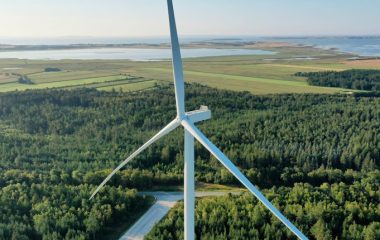
Photo: Ministry of Infrastructure and Energy of Albania
The government expects works on the 210 MW facility to begin next year, after a tendering procedure. Skavica would preserve water upstream on the Black Drin, prevent flooding and boost average output in the rest of the hydropower plant cascade.
The feasibility study for the construction of hydropower plant Skavica, planned since the 1960s, has been produced with the help of the European Union and the European Bank for Reconstruction and Development. Albanian Minister of Infrastructure and Energy Belinda Balluku said there are two scenarios for the 210 MW facility, one worth EUR 308 million and the other EUR 510 million.
At the presentation, she noted the government plans to use own funds for the unit and that it would complete the cascade on the river Drin (Drim). It is intended to accumulate water and end energy losses from downstream flooding. The minister said the EBRD offered to participate.
The three existing hydroelectric units downstream have a combined capacity of 1,360 MW.
Skavica is projected for annual output of 915 GWh, but researchers concluded the production of downstream hydropower plants Koman and Fierza would be boosted by almost 80 GWh in total. They have a capacity of 600 MW and 500 MW, respectively. The last in the series is Vau i Dejës, with 260 MW.
The site is in the country’s northeast, near the border with North Macedonia. In the more expensive scenario, EUR 350 million would be earmarked for the facility and another EUR 150 million for expropriation and infrastructure in the area.
Balluku added Skavica would take four years to build. Works are expected to start next year, after an international tender prepared for October.
It will take four years to build the facility with projected annual output of 915 GWh, officials said at the presentation of the feasibility study
In 2008, Albania launched a tender and six foreign companies participated, but the process was subsequently canceled.
Prime Minister Edi Rama, who recently announced the revival on the project on the Black Drin, now compared the existing three hydropower plants to “sheep without a shepherd” and expressed optimism that the construction of Skavica would start in 2021.









Be the first one to comment on this article.